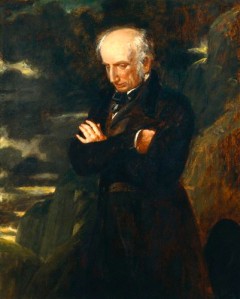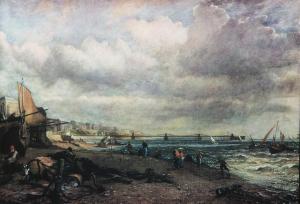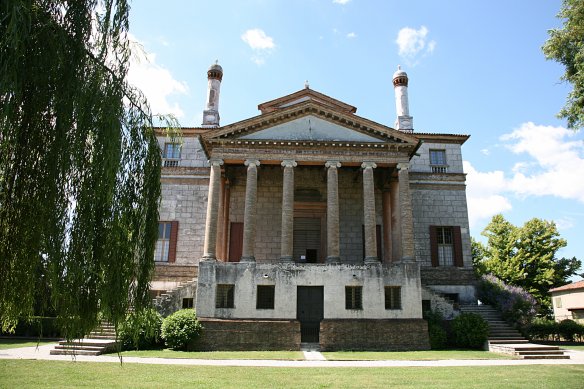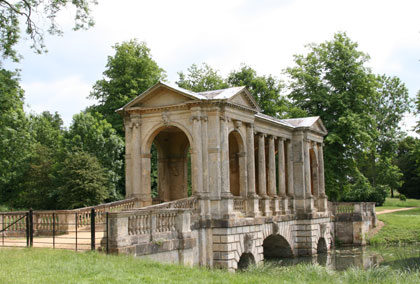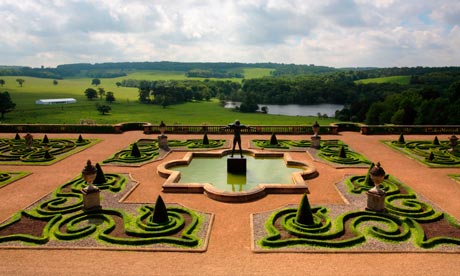Tintern Abbey captured the attention of multiple artists in the eighteenth century. It is a ruined church which can be found on the bank of the river Wye in Monmouthshire. Wordsworth rendered Tintern Abbey famously in his poem, but the picturesque qualities of the Wye Valley also lead to paintings by Gilpin and Turner. Some centuries later, the abbey still manages to attract artists: the American poet Allen Ginsberg wrote his poem Wales Visitation at Tintern Abbey, after dropping some acid. The Wye Valley, and the pure, unspoiled nature in general, caused a great influence on artists. In different arts, going from poetry till the art of painting, nature is one of the most important themes in the eighteenth century. First of all, the role nature will be discussed, and more precisely that of the Wye Valley, in the writings of the Wordsworths. Following that, we will find out how nature is represented in some famous eighteenth century paintings, focusing on the painter John Constable.
“Lines Composed a Few Miles above Tintern Abbey, on Revisiting the Banks of the Wye during a Tour, July 13, 1798”
In his poem “Lines Composed a Few Miles above Tintern Abbey, on Revisiting the Banks of the Wye during a tour, July 13, 1798” Wordsworth returns after five years with his sister, Dorothy, from a trip remembering his previous excursions to this area that meant so much to him. He reflects back on the emotional feelings he experienced during that first time and how he enjoyed the landscape. However, during this last visit, he realizes he has matured and cannot go back to that moment in the past. That is why he makes a mirror image of his younger sister Dorothy, as he teaches her how to look at nature the way he used to look at it. In doing so, he provides himself with those past joyous feelings as he fondly remembers them now, while thanking his sister for bringing him to his former place of residence and student years once more.
Tintern Abbey is one of Wordsworth’s most famous poems. The poem can be seen as a record of the different stages in his poetic career. In the poem, the speaker sees Tintern Abbey and the surrounding valley from a hill. The reader is confronted with a sense of overview. The conception of nature and the composition of the landscape in it, can be compared with that of Constable, a contemporary painter, who will be discussed a bit further. In the poem, Wordsworth connects the human world with the divine world through the world of Nature. He finds the unity of the universe in the Wye valley. In this stage of Wordsworth’s life, he conceptualises nature as some sort of religion, and ‘the universal human malady in mind and heart could be cured only by Nature’s “holy plan”’. This higher power attributed to nature is clearly visible in the following lines (l. 107-110):
Of eye, and ear,–both what they half create,
And what perceive; well pleased to recognise
In nature and the language of the sense,
The anchor of my purest thoughts, the nurse,
The guide, the guardian of my heart, and soul
Of all my moral being.
In the poem, there are only traces of people, but not people itself. That lack of figures is part of the motive of representing the landscape as wild, untouched and desolate. The traces (hedge-rows, farms, smoke) are visible in the next few lines (l. 11-19):
These plots of cottage-ground, these orchard-tufts,
Which at this season, with their unripe fruits,
Are clad in one green hue, and lose themselves
‘Mid groves and copses. Once again I see
These hedge-rows, hardly hedge-rows, little lines
Of sportive wood run wild: these pastoral farms,
Green to the very door; and wreaths of smoke
Sent up, in silence, from among the trees!
Wordsworth also mentions the Hermit. The Hermit can be regarded as a symbol for solitude and the integration of the human presence in the landscape (l. 22-23):
Or of some Hermit’s cave, where by his fire
The Hermit sits alone.
Wordsworth’s influences
Wordsworth writings clearly reflect his love for nature and his relation with her. Most often his writings notify the beauty of nature as opposed to the horror of nature, in a few of his writings. The poet seems to have a particular affection towards nature and therefore presumable uses many adjectives to vividly describe all his perceptions of nature.
It is pleasurable to read Wordsworth’s poetry as the poet acquaints the reader with the beauty of nature. Wordsworth considered nature to be more than a collection of trees, bushes, hills, streams […] to him nature has personality, almost similar to humans with a power to poetically inspire those who love her. He considers nature as a friend, teacher and guide and claims that he could feel the presence of spirituality in nature like no other poet could.
P.B. Shelley, in his poem To Wordsworth, calls Wordsworth ‘Poet of Nature,’ as William Hazlitt calls him poet of the mountains, and both these appellations are very appropriate for Wordsworth, because Wordsworth both got his poetic inspiration and materials for his poems from nature. Right from the poems which he wrote in his early years, we find that his poems are suffused with the beauty and descriptions of nature, as if nature followed him like a shadow. (Sarker, 2003: 300)
However, as William spent most of his life living with his sister, Dorothy, it might be reasonable to acknowledge she might have had a considerable influence on his life and writings. Her love and passion for nature is similarly reflected in her writings and as Coleridge puts a strain on her as “her eye watchful in minutest observation of nature”. Both Wordsworth family members seem to find peace and understanding in nature as Dorothy mentions “It was a sight that I could call to mind at any time it was so distinct.” referring to nature in which she could be herself. As William Wordsworth took nature to be his truest friend, so did Dorothy too.
Nature in Constable’s paintings
As Wordsworth describes and admires nature in all its glory and aspects in his poem, so has it also been done in the art of painting. John Constable (1776-1837) was one of the first English painters who started painting in the countryside, always trying to capture the landscape of his native region in that one moment. He was not very successful in his own country, but in France he had some following. One of his most known paintings The Hay Wain has had quite an influence on French artists. It has inspired painters such as Eugène Delacroix. Together with William Turner (1775-1851), Constable is acknowledged for his innovation in painting landscapes.
Constable is particularly known for his depiction of clouds that symbolize the sublime in his paintings. Wordsworth connects to the divine world through his verbal descriptions of nature, while Constable does this by painting the clouds and pastoral nature that surrounds him. Such as in Branch Hill Pond he presents an everyday image of the Hampstead Heath in which the landscape looks rustic and picturesque. The human entities such as the farm and the cart with the labourers are nestled into the landscape. There is a symbiotic relationship present between nature and humanity. Later on he focused more and more on the ever-changing weather, shown in his extensive collection of cloud studies and landscapes.In Chain Pier for example, Constable makes the weather more dynamic and expressive. It is as if it is possible to feel the wind and rain coming out of the painting. Often there are humans present in Constable’s paintings, or at least traces of human existence, yet nature and landscape are always the biggest entity in the paintings. The humans presence adds to the landscape but never overpowers/controls it.
Conclusion
Wordsworth’s poetry reflects the thematic characteristics of the Romantic period perfectly. Following Rousseau’s conviction that in nature ‘the essential passions of the heart’ could be found in their purest form, his poems show the same interest in nature and escaping to it. However, his poetry is more than just describing nature. He places himself in the landscapes he describes and talks about his own observations and emotions. His poetry is both spontaneous and controlled, comparable with nature itself. Wordsworth believed that the naturalistic state of a person is tranquility and should not be overwhelmed by society. Therefore, nature could be an escape for him.
Sources
“An Analysis of Wordsworth’s Tintern Abbey”. Freehelpstoenglishliterature. Web. 15 November 2012. <http://freehelpstoenglishliterature.blogspot.be/2008/12/analysis-of-wordsworths-tintern-abbey.html>
Barker, Elizabeth E. “John Constable”. The Metropolitan Museum of Art. Web. 15 November 2012. <http://www.metmuseum.org/toah/hd/jcns/hd_jcns.htm>
Clucas, Thomas. “Ars Gratia Artis”. Exposition. Oxford University, 2010. Web. 15 November 2012. < http://expositionmagazine.com/?p=411>
Constable, John. Branch Hill Pond. 1825. Artstore Slide Gallery. Web. 15 November 2012.
Constable, John. Dedham Vale. 1828. Artstore Slide Gallery. Web. 15 November 2012.
Constable John. The Chain Pier. 1827. Artstore Slide Gallery. Web. 15 November 2012.
Greenblatt, S., et al. The Northon Anthology English Literature: Volume D. New York: W. W. Norton & Company. 2005. Print.
Heughebaert, H., et al. Artistieke Opvoeding. Wommelgem: Uitgeverij Den Gulden Engel, 1988. Print.
Sarker, Sunil Kumar. A companion to Wordsworth. Delhi: Nice Printing Press. 300-302. 2003. Print.
Teifidancer. “Allen Ginsberg’s – Wales Visitation”. Teifidancerblog. Web. 15 November 2012. <http://teifidancer-teifidancer.blogspot.be/2010/01/allen-ginsbergs-wales-visitation.html>
“Tintern Abbey”. Photograph. The Tintern Village Website. Web. 15 November 2012. <http://www.tintern.org.uk/abbey2.htm>


